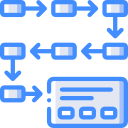Achieving Accurate Payroll Reporting with Technology
Chosen theme: Achieving Accurate Payroll Reporting with Technology. Explore how modern tools transform payroll from a stressful monthly scramble into a trustworthy, transparent, and audit-ready rhythm that protects people, budgets, and business reputation.



The Digital Foundation of Payroll Accuracy
Accurate payroll reporting begins where employee data is created. Centralizing profiles, contracts, and time records eliminates duplicate entry and prevents version drift. When one change updates everywhere, payroll teams spend less time reconciling conflicting spreadsheets and more time validating outcomes.
The Digital Foundation of Payroll Accuracy
Technology enforces compliance through configurable rules—overtime thresholds, benefit eligibility, and earning codes. Instead of relying on memory, systems flag anomalies early. This creates a protective layer that catches mistakes before they cascade into costly corrections or compliance headaches.
Compliance Without Guesswork
Live Rule Updates and Configurable Tax Engines
Compliance shifts constantly. Technology with maintained tax tables and configurable rules ensures withholdings stay current. Instead of combing through bulletins, payroll teams validate exceptions, confident that the engine handles the routine, repetitive complexity accurately.
Transparent Audit Trails That Tell the Story
Every adjustment, approval, and calculation should be discoverable. Detailed audit logs transform audits from guesswork into storytelling with timestamps. When auditors ask why a net pay changed, you can show exactly what was edited, by whom, and under which policy.
Geo and Role-Based Logic for Labor Laws
Different locations mean different rules. Modern payroll systems tie labor standards to employee location and role. This ensures accurate overtime, break premiums, and local taxes without manual overrides, even as your workforce becomes more distributed and dynamic.
Human Stories From the Ledger
A regional coffee chain replaced emailed spreadsheets with a cloud time system integrated to payroll. Missed punches and tip allocations once caused weekly disputes. After automation, baristas saw consistent pay, managers stopped firefighting, and the payroll lead finally enjoyed calm Tuesday mornings.
An HR manager used to send monthly apology notes after errors slipped through. Implementing validations for earnings codes and retro pay reduced corrections drastically. She now writes quick wins instead—celebrating precise reports and sharing how the team prevented mistakes proactively.
A developer’s first paycheck once arrived short due to a missed benefit election. With onboarding synced to payroll, elections apply before the first run. The difference is emotional: confidence in the company begins when the first payslip is accurate, clear, and complete.
Metrics That Matter for Payroll Precision
01
Error Rate and Exception Volume
Count the number of pay-impacting errors per cycle and categorize root causes. Rising exceptions may indicate upstream data issues. Technology helps by surfacing patterns—such as recurring overtime misclassifications—so you can fix the source, not just patch the symptoms.
02
First-Pass Yield of Payroll Runs
Measure how many payrolls close without re-runs. A high first-pass yield reflects reliable integrations and correct configurations. Dashboards that highlight variances against historical norms help teams investigate anomalies before funds move and reports finalize.
03
Close Time and Reconciliation Effort
Shorter close times signal automation and clean data. Track hours spent reconciling payroll to general ledger and benefits invoices. Continuous improvements—like auto-mapped GL codes—turn painful, late-night reconciliations into quick, verifiable checks that scale as headcount grows.
Security and Trust by Design
01
Role-based access ensures people see only what they need. Separate data entry, approvals, and release permissions to reduce fraud risk. When duties are segregated, payroll remains both accurate and trustworthy, even during peak periods and staffing changes.
02
PII and compensation details demand strong encryption in transit and at rest. Regular backups, tested restores, and uptime monitoring protect reporting continuity. The best accuracy is useless if systems fail on pay day or reports become inaccessible during audits.
03
Assess vendors for certifications like SOC 2, ISO 27001, and clear incident response plans. Establish ongoing monitoring and documented SLAs. Confidence in your payroll accuracy grows when your partners demonstrate security maturity and predictable operational performance.
Change Management That Sticks
Train for Outcomes, Not Just Clicks
Move beyond feature tours. Tie training to real payroll scenarios: retro pay, mid-cycle adjustments, and garnishments. When teams practice solving authentic problems, they internalize the steps that drive accurate reporting under pressure and during unusual cases.
Phased Rollouts and Feedback Loops
Pilot with a friendly group, measure results, and iterate. Weekly feedback reveals confusing fields or missing validations. Invite comments in context—on the report, at submission time—so improvements happen where accuracy actually lives, not in a separate suggestion inbox.
Playbooks, Checklists, and Ownership
Codify close steps and exception handling in concise playbooks. Assign owners for each checkpoint to avoid gaps. Clear documentation stabilizes accuracy when team members rotate or take leave, keeping payroll reporting dependable every cycle.
Future Trends Shaping Accurate Payroll Reporting
AI for Anomaly Detection and Forecasting
Machine learning can flag unusual variances, misclassified earnings, or suspicious patterns before payroll finalizes. Predictive insights help managers staff wisely and finance plan cash needs, keeping both accuracy and business agility aligned across cycles.
Real-Time Payments and Earned Wage Access
Faster rails and on-demand pay introduce new reconciliation challenges. Systems that reconcile in near real time keep reports accurate despite accelerated disbursements. Clear visibility into timing and fees preserves trust as payment expectations evolve.
Global Scale With Local Precision
Distributed teams demand country-specific compliance, currencies, and cultural norms. Multi-country payroll platforms centralize oversight while honoring local rules. Accurate reporting becomes a shared language for leaders comparing costs, productivity, and compliance across borders.

Tell Us Your Accuracy Wins and Woes
What exception used to haunt your payroll runs? Which validation finally fixed it? Share your story so others can learn, and we’ll highlight practical solutions that anyone can apply next cycle.

Subscribe for Field-Tested Playbooks
Get monthly briefs with templates, checklists, and case studies focused on achieving accurate payroll reporting with technology. We curate tactics that teams actually use, not theoretical advice that gathers dust.

Ask a Question, Shape a Future Post
What’s the one report or reconciliation step that still feels brittle? Drop a question. We’ll research tools, interview practitioners, and publish a detailed guide to help you nail it with confidence.
